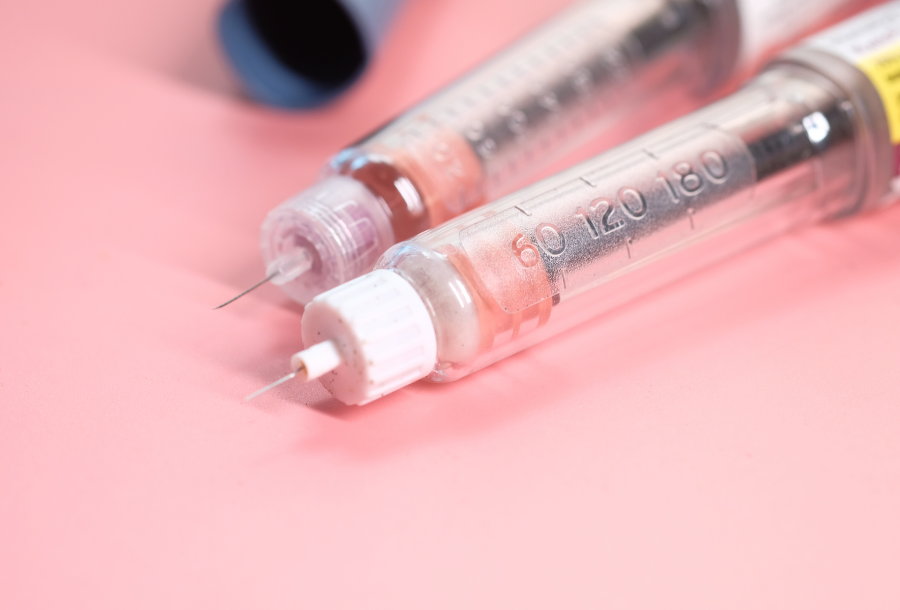
How to lower blood sugar levels
July 18, 2022
An increase in blood sugar levels does not require a trip to the emergency room if you know how to effectively lower them. Here, we will go over tried-and-true methods for significantly lowering blood glucose levels as well as the risk of diabetes.
When blood glucose levels get too high— a condition known as hyperglycemia or high blood sugar — the quickest way to bring them back into normal range is to increase insulin doses. While this is one effective way to curb the rise in blood sugar, there are several others. Continue reading to learn more about these.
What are the symptoms of hyperglycemia?
Blood sugar control is critical, especially among people with diabetes, because poor blood sugar management can lead to a wide range of health conditions, including heart disease, kidney disease, and other diabetes complications. The telltale signs of elevated blood glucose levels include:
- Fatigue
- Increased thirst
- Frequent urination
- Dry mouth
- Nausea and vomiting
- Shortness of breath
- Fruity odour on breath
What causes blood sugar spikes?
A rise in blood sugar can be caused by a number of factors, including low insulin levels produced by the body or insulin resistance, a condition in which yourbody is unable to use insulin effectively. Other reasons include following ahigh-carb diet, taking blood pressure medications, lack of physical activity,and heightened stress levels.
According to Diabetes Australia, two million Australians have pre-diabetes and are at risk of type 2 diabetes. Pre-diabetes is defined as having blood glucose levels that are higher than normal, ranging between 110 and 126 milligrammes per decilitre, but not high enough to be diagnosed with type 2 diabetes.
Those at risk for developing diabetesand pre-diabetes include:
- Individuals carrying extra weight
- People with high blood pressure
- Pregnant women with gestational diabetes
- Polycystic ovarian syndrome (PCOS) sufferers
- Those with a family history of heart disease or type 2 diabetes
Simple ways to maintain a healthy blood sugar level
Exercise
It has been shown that increasing physical activity levels can help people with type 2 diabetes. It helps in achieving and maintaining moderate weight while increasing insulin sensitivity. If you're at risk of experiencing symptoms of hypoglycaemia, check your blood sugar level before and after exercising with a reliable continuous glucose monitoring (CGM) device. This will help you and your healthcare provider plan different activities that won't cause your blood sugar levels to spike or plummet.
Drink plenty of water
Drinking enough water may help you maintain healthy blood sugar levels. It not only keeps you hydrated, but it also helps your kidneys flush out excess sugar through urine. Avoid sugary drinks as much as possible, including your favourite diet soda. You need clean, unadulterated drinking water to lower your blood sugar levels.
Maintain a healthy diet packed with dietary fibre
Fibre promotes a slow increase in blood sugar levels by slowing carb digestion and sugar absorption. Soluble fibre, in particular, has been shown to improve blood sugar control. It is abundant in leafy greens, whole grains, and the exocarp (or outermost layer) of fruits and vegetables.
Aim for a healthy weight
Maintaining a healthy weight leads to healthy blood sugar levels and reduces the risk of diabetes.
Manage your stress levels
Stress causes blood sugar spikes. Relaxation activities such as meditation, yoga and breathing exercises have been shown in studies to significantly reduce stress and blood sugar levels.
Sleep more
Sleeping enough is essential for good health. Its absence can have an impact on blood sugar levels and insulin sensitivity, raising the risk of developing type 2 diabetes. Moreover, sleep deprivation raises cortisol levels, which disrupts your body's blood sugar management.
These are just some of the many natural ways to lower your blood sugar levels. Because they entail making lifestyle and dietary changes, be sure to thoroughly discuss them with your healthcare team first, especially if you are taking diabetes medication or any other drugs.
Meet our team.
Subscribe to our newsletter & join a community of 50,000+
Get access to limited content drops, free invites to expert fireside chats, and exclusive offers.

How to lower blood sugar levels
An increase in blood sugar levels does not require a trip to the emergency room if you know how to effectively lower them. Here, we will go over tried-and-true methods for significantly lowering blood glucose levels as well as the risk of diabetes.
When blood glucose levels get too high— a condition known as hyperglycemia or high blood sugar — the quickest way to bring them back into normal range is to increase insulin doses. While this is one effective way to curb the rise in blood sugar, there are several others. Continue reading to learn more about these.
What are the symptoms of hyperglycemia?
Blood sugar control is critical, especially among people with diabetes, because poor blood sugar management can lead to a wide range of health conditions, including heart disease, kidney disease, and other diabetes complications. The telltale signs of elevated blood glucose levels include:
- Fatigue
- Increased thirst
- Frequent urination
- Dry mouth
- Nausea and vomiting
- Shortness of breath
- Fruity odour on breath
What causes blood sugar spikes?
A rise in blood sugar can be caused by a number of factors, including low insulin levels produced by the body or insulin resistance, a condition in which yourbody is unable to use insulin effectively. Other reasons include following ahigh-carb diet, taking blood pressure medications, lack of physical activity,and heightened stress levels.
According to Diabetes Australia, two million Australians have pre-diabetes and are at risk of type 2 diabetes. Pre-diabetes is defined as having blood glucose levels that are higher than normal, ranging between 110 and 126 milligrammes per decilitre, but not high enough to be diagnosed with type 2 diabetes.
Those at risk for developing diabetesand pre-diabetes include:
- Individuals carrying extra weight
- People with high blood pressure
- Pregnant women with gestational diabetes
- Polycystic ovarian syndrome (PCOS) sufferers
- Those with a family history of heart disease or type 2 diabetes
Simple ways to maintain a healthy blood sugar level
Exercise
It has been shown that increasing physical activity levels can help people with type 2 diabetes. It helps in achieving and maintaining moderate weight while increasing insulin sensitivity. If you're at risk of experiencing symptoms of hypoglycaemia, check your blood sugar level before and after exercising with a reliable continuous glucose monitoring (CGM) device. This will help you and your healthcare provider plan different activities that won't cause your blood sugar levels to spike or plummet.
Drink plenty of water
Drinking enough water may help you maintain healthy blood sugar levels. It not only keeps you hydrated, but it also helps your kidneys flush out excess sugar through urine. Avoid sugary drinks as much as possible, including your favourite diet soda. You need clean, unadulterated drinking water to lower your blood sugar levels.
Maintain a healthy diet packed with dietary fibre
Fibre promotes a slow increase in blood sugar levels by slowing carb digestion and sugar absorption. Soluble fibre, in particular, has been shown to improve blood sugar control. It is abundant in leafy greens, whole grains, and the exocarp (or outermost layer) of fruits and vegetables.
Aim for a healthy weight
Maintaining a healthy weight leads to healthy blood sugar levels and reduces the risk of diabetes.
Manage your stress levels
Stress causes blood sugar spikes. Relaxation activities such as meditation, yoga and breathing exercises have been shown in studies to significantly reduce stress and blood sugar levels.
Sleep more
Sleeping enough is essential for good health. Its absence can have an impact on blood sugar levels and insulin sensitivity, raising the risk of developing type 2 diabetes. Moreover, sleep deprivation raises cortisol levels, which disrupts your body's blood sugar management.
These are just some of the many natural ways to lower your blood sugar levels. Because they entail making lifestyle and dietary changes, be sure to thoroughly discuss them with your healthcare team first, especially if you are taking diabetes medication or any other drugs.
Get irrefutable data about your diet and lifestyle by using your own glucose data with Vively’s CGM Program. We’re currently offering a 20% discount for our annual plan. Sign up here.
Next articles

Understanding the causes of insulin resistance
Unravel the mystery of insulin resistance, its causes and implications for your health. Explore evidence-based strategies to prevent and manage this condition and optimise your metabolic health.



 Share
Share Tweet
Tweet Share
Share














